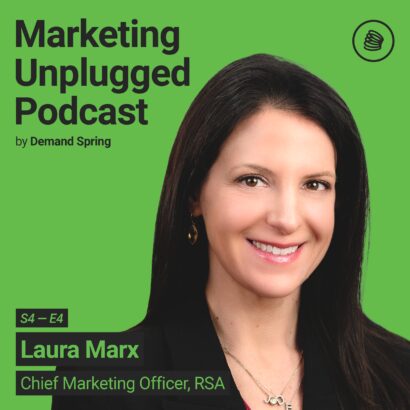Ten years ago I stepped off the ledge of a marketing leadership role at IBM to pour myself into the dream I had of starting my own company.
It’s been a great ride so far. We have built a company that has worked with some of the biggest and fastest growing B2B brands. Brands like Akamai, BNY Mellon, Boston Consulting Group, Canon, Dun & Bradstreet, Iron Mountain, Fidelity, Putnam, Staples, and Waters. Today, we are partners to CMOs and their leadership teams in helping them design and implement advanced Revenue Marketing practices.
Ten years later I am a little greyer, a little heavier, and perhaps a little wiser (my 14 year old would disagree). Here are 10 reflections from 10 years in Revenue Marketing:
1. Marketing has come a long way: People who know me have heard me say a few times that when I started my career in B2B marketing 26 years ago our job was to keep the food warm and the beer cold. Today, B2B Marketing organizations are front and center through much of the buyer journey. As Gartner has identified, only 17% of the B2B buying process today is spent meeting with potential suppliers. Over the past ten years, we have observed and helped B2B marketers become more strategic, more engaged throughout every stage of the buyer journey, and much better equipped with technology that enables personalization at scale. CMOs have earned their seat at the adults’ table.
2. Analytics gap: An area that many marketing organizations (of all sizes) continue to struggle with is putting in placing a set of analytics processes and practices that enables them to be insight-driven. The big gap in my opinion is not a technology one, but a people gap. I spent ten years in the analytics space before Demand Spring. The belief that was espoused by the analytics’ vendors back then—”analytics for the masses”—has never fully materialized. Data analysis is a skill that takes dedicated expertise and attention. For marketing organizations to instrument their marketers with the insights needed to optimize performance, they must have dedicated Data Scientists within marketing.
3. Too much science, not enough art: One of the other major gaps that is missing on the client-side of marketing organizations today in my opinion is creativity. CMOs have placed an emphasis on hiring marketing technologists, digital marketers, and marketers who can manage projects and processes. It is hard to find marketers on the client-side who are comfortable, and have permission, to be creative. Most marketing campaigns today are very focused on the types of things we do at Demand Spring, designing ABM, engagement and nurture strategies, aligning content to them, and making them real in MarTech platforms. What’s missing is the creativity in these campaigns to capture hearts and souls.
4. Privacy vs personalization: It has been fascinating having a front row seat to witness the evolution of this turf war over the past 10 years. People value their privacy. They also value personalized experiences—looking at you Netflix, Facebook, and Amazon. It’s clear that the landscape is shifting dramatically right now with the cookieless product developments from vendors like Google and Apple. I am not sure how this will end but I do know that folks like our newest Leap advisor Chris Arrendale are going to be very busy for the next 3 years. This feels like Y2K for Marketers—a reference that people of my vintage will vividly recall 😉.
5. AI will dramatically change everything: Speaking of technology, we have witnessed tremendous growth in the use of AI in Marketing over these 10 years (just look at the growth of the Intent space). But there is still much room for improvement. Why am I still deciding the best time to send an email to you? My Marketing Automation Platform should know the best time to send to each individual based on historical engagement. MarTech in 5 years, let alone 10, should be very different than it is today.
6. Canada’s risk aversion: I am as proud of a Canadian as you will find. But Oh Canada we are risk averse when it comes to spending money to make money. Despite being a Canadian company, 98% of our revenue comes from the US? Why? When it comes to marketing, US companies swing for the fences. They realize that to grow in a highly competitive market they need to hit a home run and they are willing to strike out trying. Canadian companies tepidly try to drive growth by hitting for singles.
7. The virtues of virtual: Demand Spring was proudly virtual before it was cool. We had small offices in Ottawa and Boston before COVID, but all employees could choose to work from home or the office any day of the week, and we hired the best person regardless of location within North America. I am a big advocate that virtual translates into healthier people, a healthier planet (at a time when our planet is in crisis, CEOs need to be part of the solution), and thriving businesses like ours.
8. Our universities and colleges are still not developing B2B marketers: This isn’t a ten year reflection but a 30 year one. When I was in business school that long ago it was all about B2C marketing and the 4 P’s. The young associates we hire into Demand Spring today come wonderfully equipped with a set of skills that I could only dream of at their age. But one thing remains—the amount of B2B education they are receiving in business school is still very inadequate. With so many baby boomers exiting the workforce now, and so many Gen Z’s entering it, we are going to see a real drop in productivity if our universities and colleges don’t do a better job of equipping their students with a stronger B2B curriculum.
9. It’s about the people: If I didn’t fully appreciate this one ten years ago, I do now—running a B2B services business is all about the people. Our consultants are our product. Only they can surprise and delight our customers. If you are considering starting a consulting services business, do yourself a favor and dive deep into the importance of three concepts: billable utilization; enabling the pyramid organization structure through hiring, coaching, and mentoring; and continuous learning.
10. The future is bright: The role we play in the buyer journey, the skills we have developed to deliver on our revenue commitments, and the progress we have made in aligning ourselves with sales, all point to a bright future for B2B marketers. Sure, we must navigate a volatile economy right now, 10,000 MarTech platforms, and figure out how to cut through all the noise. But we’re marketers. We are agile, savvy, and resilient. We got this!
Here’s to the next 10 years of growth at Demand Spring and for all of you in Revenue Marketing!






